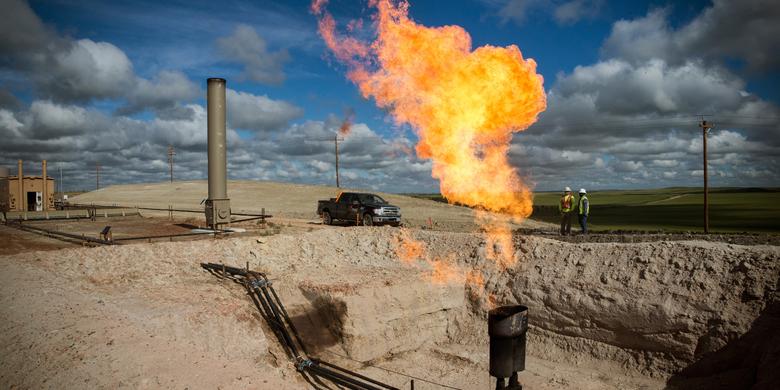
GAS PRICES DOWN

Natural-gas prices plunged to a 14-year low, as the warmest start to winter on record in the U.S. saps demand for the heating fuel and deals another blow to struggling energy companies.
A weather pattern known as El Niño has pushed temperatures to records for this time of year across North America. The unseasonable warmth has cut consumption and raised concerns that the current gas supply glut will linger for years. Monday's 4.8% decline brings year-to-date losses to 34%, making natural gas the third-worst-performing commodity so far in 2015.
"This level of inventories and a super-El Niño is unprecedented," said Jonathan Berland, senior managing director at Gresham Investment Management LLC, which oversees $8.2 billion.
January natural-gas futures closed 9.6 cents lower at $1.894 a million British thermal units. Contracts for future delivery of gas are at all-time lows as far out as 2028.
On an inflation-adjusted basis, Monday's settlement price for natural gas was the lowest since February 1992 and was within 10 cents of the inflation-adjusted record low from January 1992 of $1.80 per million BTUs.
While the latest leg down in natural-gas prices is a boon for consumers in the form of lower heating bills, it is hammering stock and bond prices of energy companies already crippled by a broad decline in commodities. Bonds issued by Chesapeake Energy Corp., a benchmark for the junk-debt market, tumbled again Monday, to about 30 cents on the dollar ahead of a debt-swap deadline. The No. 2 gas producer in the U.S. is working with Evercore Partners Inc. to shore up its balance sheet. Chesapeake's shares are down 80% so far this year after falling 3.9% on Monday.
U.S. heating demand, as measured by how much outdoor temperatures deviate from room temperatures day to day, or "heating-degree days," is on track to be among the lowest on record this winter, according to Commodity Weather Group LLC, while natural-gas stockpiles are near all-time highs.
While meteorologists mark the official start of winter in late December, the winter-heating season in the gas market kicks off earlier in the year.
Producers, emboldened by newfound supplies of U.S. shale gas, have ramped up output in a race to squeeze out rivals. As a result, the nation's production is at a record even though prices have been sliding for two years.
"I've been shocked," said Norman MacDonald, a portfolio manager for an energy fund at Invesco Ltd. in Toronto. "They're focused on growing [production], but you're not making any money."
Mr. MacDonald spent this past weekend hanging Christmas lights while wearing a T-shirt, fearless of the frostbite that would usually be a concern during a Canadian December. New Yorkers on Sunday stood under the Brooklyn Bridge in lines for ice cream that stretched out the door.
Some weather forecasters say the mercury could stay elevated. Temperatures from Atlanta to Montreal are likely to be more than 15 degrees Fahrenheit above normal on Christmas, says Commodity Weather Group. Gas-weighted heating-degree days for this month will be down 15% from a year ago, which was the second-warmest December on record.
An El Niño occurs when winds in the equatorial Pacific slow down or reverse direction. That causes waters to warm over a vast area, which in turn can upend weather around the world. El Niño can lead to severe drought in Southeast Asia, heavy flooding in parts of North and South America and warm weather in northern North America, posing a challenge to farmers and producers and upending many commodity markets.
But when it comes to energy costs, El Niño is good news for consumers. U.S. government analysts are predicting a 10% drop in household gas bills from last winter to this winter, but the savings could be bigger and last longer as temperatures surpass even the warmest forecasts.
Duke Energy Corp., one of the biggest U.S. utilities, said last month that it will drop power rates for some North Carolina customers by 2.7% to 4.1% partly because the gas that feeds their power plants has become so much cheaper. Many big businesses such as power plants and factories are looking to make longer-term changes, switching to use more gas instead of coal and other fuels.
"Folks are just trying to take advantage of these prices any way they can," said Geoff Duda, vice president of Direct Energy Residential, a retail power and gas supplier. "Our larger-volume customers definitely see this as something more than a short-term trend."
-----
More:

